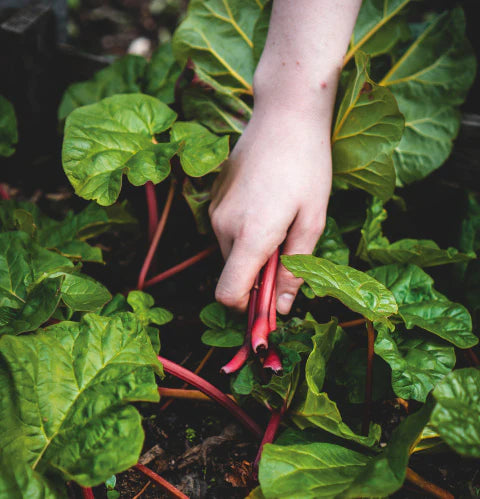
Take a look at some of the gardening jobs you may need to check off this time of year.
Now the kids are back to school and the weather is still decent enough for outdoor jobs, thoughts turn to clearing up the parts of your garden and backyard. Your plants at this stage would have either overgrown, lost shape, started to go to seed or even decay and shed.
Let’s get started with the great garden declutter!
Cut Off the Dead Bits

Simply put, you would be doing this throughout the late summer.
Look for dead seed heads for deadheading, spent branches on your flowering plants and remove any mould or diseased vegetation and leaves.
Removing dying sections might give you an extra round of buds and fresh sprouts. You will be letting more sunlight in again, and you may be surprised with a late round of flowers.
Don’t be Deadly when Deadheading
When it comes to deadheading a perennial flowering plant that has completed its flowering cycle, keep the leaves thriving for a while.
Don’t kill off the whole plant once the flowers are gone. Allowing the leaves to soak up the last of the summer sun helps nourish the bulbs and establish the roots for a more vibrant result next spring.
Ditch the Diseased Bits Separately
Be sure to keep the diseased garden waste away from the compost bin or mulching bag, so you do not reinfect your garden.
Remove All Remaining Weeds

August is also considerable for weed growth, so you may find them taking over. Any parts of the garden overgrown with weeds must be cleared for various reasons.
You don’t want reseeding to begin. Stop fully grown weeds from growing and taking root in crevices, which could inflict structural damage.
Tidy Your Beds
This includes tidying up the beds. Remove any weeds here, cut off dead bits and add a fresh layer of mulch and compost to keep it looking today and fresh.
Harvest Anything Ripe

If you have a vegetable plot or fruits growing nearby, start thinning out the plants in your GIY garden by harvesting anything that is already ripe and ready to be eaten early in September.
You should also thin out the plants by removing the spent branches where harvesting has happened.
This allows faster ripening for the rest of the plant as it rediverts its energy to the remaining sections. You may also have neighbouring plants that could do with the extra light this allows.
Save the Seeds & Cuttings
Be sure to save the seed heads on your flowering or food garden plants for storing in time for spring planting.
You may want to save some cuttings for propagating indoors or in the greenhouse in time for the following spring.
Mow & Heal Lawn One Last Time

You might be due another date with a lawnmower once those weeds are out of the way.
No doubt the grass may be scorched to beige, given our summer. Avoid watering the lawn to help conserve water for the nation in general, as the lawn will naturally recover itself when the rains return.
If you insist on watering, do your best to use grey or recycled water harvested from a rainwater butt.
You may want to aerate the lawn soil to reduce soil compaction. Then, prepare the lawn for the winter once it's tidied by adding extra compost to improve soil fertility and even overseed to encourage denser turf.
Cutback the Creepers
Some of your perennial creepers will have to be cut back, mainly if they have grown into areas where it is a nuisance, like window frames and garage doors or even into other plants and strangling them.
If the leaves have begun to fall, trim them off for composting or mulching. Then, trip back the branches and arrange the remaining core stems into a tidy formation. Now they'll be ready to spring back to life next year just where you want them.
Divide and Conquer
If you have a healthy, thriving plant that has taken over overcrowding other plants, you don’t have to say goodbye to all those healthy leaves.
Divide, remove the abundant excess with their roots/bulbs intact, then relocate and transplant into pots or another part of the garden in need of more growth. You must take reasonable care to keep the root ball intact, so do it gently.
Clear Out Old Pots
If old flowering plants have been spent, empty your old pots. Clean them out, reuse the spent solid in your compost pile, or mix it with the mulch.
Take stock and stack your pots away from the elements in storage, so they don’t become breeding grounds for stale water, flies, mould etc..
Prune Evergreen Hedges, Trees & Shrubbery
It’s an excellent time to keep all the evergreen and winter-hardy shrubs, trees and hedging in check.
Time for a cutback and trim so they don’t overgrow and impede your garden's walkways or lines of sight.
Where To Put Your Garden Cuttings

During rising inflation, recycle as much of your garden cuttings as possible. Now that you’ve removed all this material from your landscape, here are some great ways to save on Waste disposal costs.
Mulching
Your heroic garden cleaning efforts include cuttings such as leaves, bark, or grass clippings as mulch. Mulching also releases nutrients slowly back into the soil.
In addition, it will also be good for biodiversity, creating a healthy ‘Forest floor’ effect for the minibeasts.
For example, you could bag your leaves as you continue raking into Autumn and use this as a resource in the winter months.
Start mulching in the autumn as the weather turns to keep your soil well-conditioned.
Composting
Rather than add to more central waste disposal pressure or spend more money buying compost - it’s best long term to get composting. Get a compost pile going in a bigger and smaller garden; a compost bin could be helpful.
Get started with composting. Check out our blog: Keep Calm and Compost Naturally at Home - Why It’s Worth It & How to Get Started.
At a time of rising inflation
Kindling
With fuel bills rising, don’t forget to save some of those twigs and stripped branches in a dry space for kindling when you start the fire again in the autumn.
What’s Next?
Well, now that you've cleaned the place up, there could be other planting, propagating, and prepping jobs for the Autumn garden!
Check out our follow-up blog: Autumn Month by Month Checklist For Your Garden.
Stock up on these Garden Supplies
Here’s a handy shop list to help you get all the right tools for big clean-up jobs in the garden!
- True Temper Eagle 18-Inch Rake
- GardenWorx 5 Piece MultiTool
- Flexi Tub 40L - Black
- 250 Litre Waterbutt Set With Stand And Filler Kit
- Buildworx Plastic Shovel With Plastic D Handle
- Buildworx Irish Shovel With 54" Handle
- Buildworx Dutch Hoe
- 5lb Felling Axe + Free Bow Saw
- GardenWorx Petrol Hedge Cutter 24in Dual Action Blade 25cc
- GardenWorx Petrol Brushcutter 43cc Double Handle Straight Shaft
- GardenWorx 4.0 Self Propelled 46cm Petrol Lawnmower 140cc B&S
- GardenWorx 7hp Petrol Pressure Washer & Pump 180 Bar with a detergent tank
What's your end-of-summer routine, and have you found a way to do this WAYYYYY more efficiently? Share them with us!
Why not tell us on Facebook and Instagram and share your handiwork


